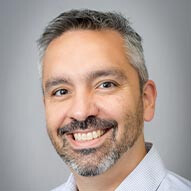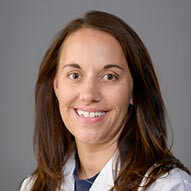Headaches in children
Just like adults, children can experience various types of headaches, including tension, sinus and migraine. The Children’s Health℠ Headache Clinic offers expert, multidisciplinary care for children coping with headaches and migraines.
What is a pediatric headache?
Headaches are fairly common among children and teens of all ages. Headaches are one of the top five health problems that affect children, with 40 percent of children suffering from headaches by age seven and 75 percent by age 15. Most headaches are harmless, but if they persist and get worse over time, they could be a sign of a serious problem, such as a brain tumor (very rare). Most head pain is harmless, and will usually go away on its own.
You should take your child to a doctor immediately if they experience any of the following symptoms in combination with a headache:
Any symptoms that cause your child to wake up during the night
Flashes of light
Loss of vision
Muscle weakness
Sensitivity to light and sound
Vertigo (feeling that the room is spinning)
What are the different types of pediatric headaches?
The most common type of headache that children experience are tension headaches (stress headaches).
Other types include:
Sinus headaches - If your child has a cold or allergies, the openings of his or her sinuses may be blocked mucus or swollen tissue. The pressure caused by swelling and congestion causes sinus headaches. Some symptoms of a sinus headache are pain or pressure in the forehead or around the eyes and cheeks, or tender areas over and under the eyes. When your child blows his or her nose, bends down, or jumps, the headache may get worse.
Migraines (especially severe headaches that seem to run in families and may be caused by physical and chemical changes in a child’s brain). Migraines occur when blood vessels in the brain constrict temporarily. Children with migraines may experience pain that affects the whole head; attacks lasting from less than an hour to several hours; nausea or vomiting that lasts after head pain subsides; abdominal pain and/or car sickness; a sudden start to severe pain; sensitivity to light and noise; dizziness; lack of energy; and blurred vision.
Medication overuse headaches is a disorder that occurs when taking too much headache medications.
How are pediatric headaches diagnosed?
When your child visits his or her provider, or comes in for an evaluation at the Children’s Health Headache Clinic, we will:
Ask you and your child to describe his or her headache history in order to identify patterns, common symptoms, and possible triggers
Conduct a physical exam to check for muscle tightness and postural problems, high blood pressure, and other issues that could trigger headaches
Conduct a neurological exam to see if your child is having any problems with coordination, movement, or sensation
If your child passes these tests, is otherwise healthy, and shows common symptoms – no further tests are needed.
Your provider may recommend:
Lifestyle modifications concerning sleep, diet, and exercise
Over-the-counter pain medications, as needed
Avoidance of dehydration by drinking enough water
Stress management
In some cases, the provider may order imaging scans to pinpoint a diagnosis or rule out other medical conditions.
These tests can include:
Computerized tomography (CT) scan - to diagnose or rule out tumors, infections, and other medical problems
Magnetic resonance imaging (MRI) - to examine the blood vessels of the brain and/or diagnose or rule out tumors, strokes, aneurysms, neurological diseases, and other brain abnormalities
Spinal tap (lumbar puncture) - to test for bacterial or viral meningitis, if your child is experiencing a high fever and neck pain/stiffness
What are the causes of pediatric headaches?
Common causes of headaches in children include:
Emotional stress
Eye strain due to poor vision
Fever
Illness
Infection, such as a cold or sinus infection
Minor head trauma
What are the common triggers of pediatric headaches?
Common triggers for migraines include:
Bright lights
Certain foods
Change in sleep patterns
Changes in weather
Fatigue
Stress
Too much physical activity
Too much sun exposure
How is a pediatric headache treated?
For common tension headaches, your provider will recommend lifestyle modifications, avoiding triggers, and treating headaches with over-the-counter pain medications if needed.
Children with chronic migraines may need prescription medications.
Headaches stemming from colds and sinus infections should respond to regular treatment of those conditions.
Certain children with severe headaches may benefit from nerve blocks (numbing) or Botox injections.
Your provider and/or the team at the headache clinic may also recommend relaxation and behavior modification techniques; rest; a healthy diet and adequate water intake; use of a cool compress when headache symptoms arise; and keeping a headache journal to monitor symptoms.
Pediatric headache doctors and providers
 Tommy Spain, MDPediatric Anesthesiologist and Pain Management
Tommy Spain, MDPediatric Anesthesiologist and Pain Management Michael Dowling, MDPediatric Neurologist
Michael Dowling, MDPediatric Neurologist Alan Farrow-Gillespie, MDPediatric Anesthesiologist
Alan Farrow-Gillespie, MDPediatric Anesthesiologist Saima Kayani, MDPediatric Neurologist
Saima Kayani, MDPediatric Neurologist Eric Remster, MDPediatric Neurologist
Eric Remster, MDPediatric Neurologist Lauren Sanchez, MDPediatric Neurologist
Lauren Sanchez, MDPediatric Neurologist Deryk Walsh, MDPediatric Anesthesiologist and Pain Management
Deryk Walsh, MDPediatric Anesthesiologist and Pain Management Cynthia Wang, MDPediatric Neurologist
Cynthia Wang, MDPediatric Neurologist Britney Etheridge-Cox, APRN, PNP-PCNurse Practitioner - Neurology
Britney Etheridge-Cox, APRN, PNP-PCNurse Practitioner - Neurology James DeMasi, APRN, PNP-AC/PCNurse Practitioner - Anesthesiology and Pain Management
James DeMasi, APRN, PNP-AC/PCNurse Practitioner - Anesthesiology and Pain Management Alicia Harding, APRN, FNPNurse Practitioner - Anesthesiology and Pain Management
Alicia Harding, APRN, FNPNurse Practitioner - Anesthesiology and Pain Management Jennifer Styers, APRN, PNP-AC/PCNurse Practitioner - Pain Management
Jennifer Styers, APRN, PNP-AC/PCNurse Practitioner - Pain Management